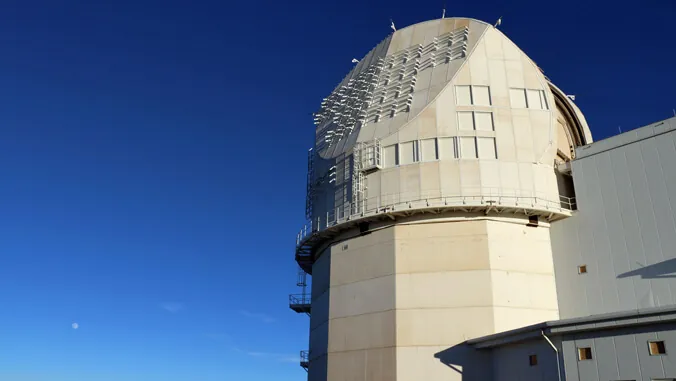
AI and Astronomy: UH Researchers Set to Unveil the Sun's Secrets!
2024-11-25
Author: Daniel
Groundbreaking research from astronomers and computer scientists at the University of Hawaiʻi Institute for Astronomy (IfA) promises to transform our understanding of the Sun like never before. This innovative study is part of the ambitious “SPIn4D” project, which merges advanced solar astronomy with cutting-edge computer science to analyze colossal volumes of data obtained from the world's largest ground-based solar telescope, situated atop the majestic Haleakalā in Maui.
Recently published in the prestigious *Astrophysical Journal*, the team's research is centered around the development of sophisticated deep learning models capable of quickly analyzing vast datasets from the U.S. National Science Foundation's (NSF) Daniel K. Inouye Solar Telescope. This powerful telescope provides unprecedented observations that could pave the way for revolutionary advancements in the speed, accuracy, and breadth of solar data analysis.
*"Understanding large solar storms is crucial not just for study but for our everyday lives,"* explained Kai Yang, an IfA postdoctoral researcher spearheading the project. *"These storms can create breathtaking auroras but also disrupt satellites, radio communications, and power grids. By comprehending their origins in the solar atmosphere, we can better anticipate potential risks."* The team's state-of-the-art simulations emulate the Sun's phenomena as observed by the Inouye, enabling real-time exploration of our star’s three-dimensional atmosphere.
The Inouye Solar Telescope, operated by the NSF National Solar Observatory (NSO), stands as the world’s most powerful solar telescope on the summit of Haleakalā, aptly named “the house of the Sun.” Equipped with specialized instruments, this telescope measures the Sun’s magnetic field through polarized light—a unique capability that the SPIn4D project aims to harness effectively.
Revolutionizing Solar Research
In collaboration with the NSO and High Altitude Observatory (HAO), the scientists employ deep neural networks to estimate the physical properties of the solar photosphere based on the telescope's high-resolution observations. This innovative approach will dramatically accelerate the analysis of the massive dataset generated by the solar telescope, potentially reaching an astonishing tens of terabytes per day.
*"Machine learning offers rapid approximations to complex computations that traditionally take much longer,"* said co-author Peter Sadowski, an associate professor at the UH Mānoa information and computer sciences department. *"Our models will enable astronomers to visualize the Sun's atmosphere in real time, eliminating the long waiting periods typically required."*
Creating Solar Simulations
To train their artificial intelligence models, the research team has generated an extensive dataset of simulated solar observations, utilizing over 10 million CPU hours on the NSF's Cheyenne supercomputer. This monumental effort has produced 120 terabytes of data that faithfully replicate the high-resolution observations captured by the Inouye Solar Telescope.
Not only are these groundbreaking advancements making a mark in the scientific community, but the team has also taken proactive steps to advance public knowledge. A 13-terabyte subset of their simulated data is already available to the public, accompanied by comprehensive tutorials. Furthermore, they plan to release their fully trained deep learning models as a valuable community resource, enabling even more extensive analysis of the Inouye Solar Telescope's observations.
This revolutionary endeavor represents a significant stride toward unlocking the mysteries of the Sun, promising to enhance not only our scientific understanding but also our preparedness for the solar phenomena that can impact our technological infrastructure. Explore the solar frontier like never before—stay tuned for what’s next in the realm of AI-powered astronomy!




 Brasil (PT)
Brasil (PT)
 Canada (EN)
Canada (EN)
 Chile (ES)
Chile (ES)
 España (ES)
España (ES)
 France (FR)
France (FR)
 Hong Kong (EN)
Hong Kong (EN)
 Italia (IT)
Italia (IT)
 日本 (JA)
日本 (JA)
 Magyarország (HU)
Magyarország (HU)
 Norge (NO)
Norge (NO)
 Polska (PL)
Polska (PL)
 Schweiz (DE)
Schweiz (DE)
 Singapore (EN)
Singapore (EN)
 Sverige (SV)
Sverige (SV)
 Suomi (FI)
Suomi (FI)
 Türkiye (TR)
Türkiye (TR)